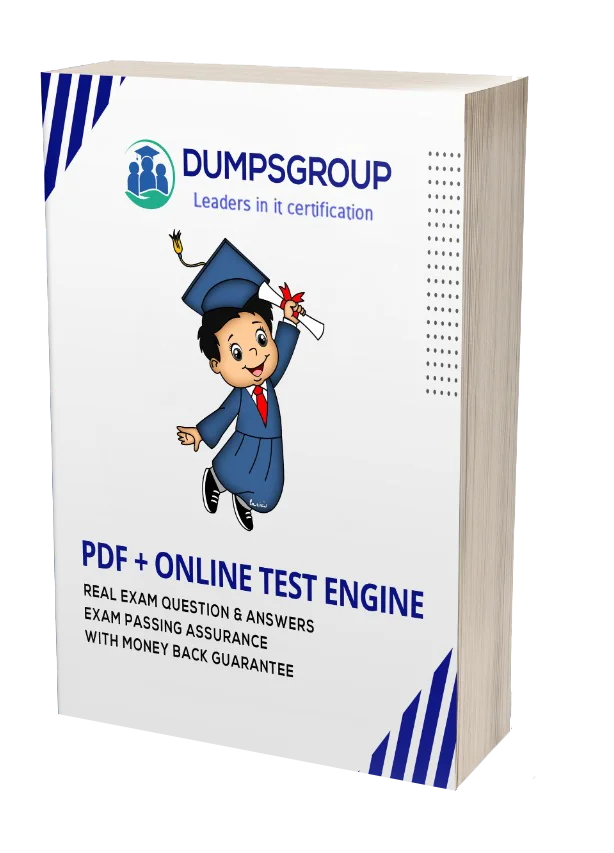
Make success possible with our Latest and Unique CRMA Certification IIA-CRMA-ADV Practice Exam!
Name: Certification in Risk Management Assurance
Exam Code: IIA-CRMA-ADV
Certification: CRMA Certification
Vendor: IIA
Total Questions: 283
Last Updated: May 13, 2024
734 Satisfied Customers

Success is simply the result of the efforts you put into the preparation. We at Dumpsgroup wish to make that preparation a lot easier. The Certification in Risk Management Assurance IIA-CRMA-ADV Practice Exam we offer is solely for best results. Our IT experts put in their blood and sweat into carefully selecting and compiling these unique Practice Questions. So, you can achieve your dreams of becoming a CRMA Certification professional. Now is the time to press that big buy button and take the first step to a better and brighter future.
Passing the IIA IIA-CRMA-ADV exam is simpler if you have globally valid resources and Dumpsgroup provides you just that. Millions of customers come to us daily, leaving the platform happy and satisfied. Because we aim to provide you with CRMA Certification Practice Questions aligned with the latest patterns of the Certification in Risk Management Assurance Exam. And not just that, our reliable customer services are 24 hours at your beck and call to support you in every way necessary. Order now to see the IIA-CRMA-ADV Exam results you always desired.
You must have heard about candidates failing in a large quantity and perhaps tried yourself and fail to pass Certification in Risk Management Assurance. It is best to try Dumpsgroup’s IIA-CRMA-ADV Practice Questions this time around. Dumpsgroup not only provides an authentic, valid, and accurate resource for your preparation. They simplified the training by dividing it into two different formats for ease and comfort. Now you can get the IIA IIA-CRMA-ADV in both PDF and Online Test Engine formats. Choose whichever or both to start your CRMA Certification certification exam preparation.
Furthermore, Dumpsgroup gives a hefty percentage off on these Spoto IIA-CRMA-ADV Practice Exam by applying a simple discount code; when the actual price is already so cheap. The updates for the first three months, from the date of your purchase, are FREE. Our esteemed customers cannot stop singing praises of our IIA IIA-CRMA-ADV Practice Questions. That is because we offer only the questions with the highest possibility of appearing in the actual exam. Download the free demo and see for yourself.
We know you have been struggling to compete with your colleagues in your workplace. That is why we provide the IIA-CRMA-ADV Practice Questions to let you gain the upper hand that you always wanted. These questions and answers are a thorough guide in a simple and exam-like format! That makes understanding and excelling in your field way lot easier. Our aim is not just to help to pass the CRMA Certification Exam but to make a IIA professional out of you. For that purpose, our IIA-CRMA-ADV Practice Exams are the best choice.
There are many resources available online for the preparation of the Certification in Risk Management Assurance Exam. But that does mean that all of them are reliable. When your future as a CRMA Certification certified is at risk, you have got to think twice while choosing IIA IIA-CRMA-ADV Practice Questions. Dumpsgroup is not only a verified source of training material but has been in this business for years. In those years, we researched on IIA-CRMA-ADV Practice Exam and came up with the best solution. So, you can trust that we know what we are doing. Moreover, we have joined hands with IIA experts and professionals who are exceptional in their skills. And these experts approved our IIA-CRMA-ADV Practice Questions for Certification in Risk Management Assurance preparation.
Which of the following is the most significant disadvantage of using checklists to evaluateinternal controls?
The results of an internal audit activity's (IAA) quality assurance and improvement programare favorable and an external assessment was completed within the last five years. Whichof the following statements may the IAA use to describe its work?
During an engagement, an internal auditor decided to use variance analysis as an auditingtechniques. Which of the following steps should the auditor pursue if he discoversunexpected deviations of actual results from budget?